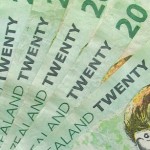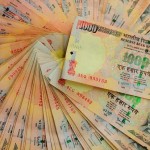Having touched highs unseen in one week against its US counterpart earlier on Tuesday, following the release of the minutes of Reserve Bank of Australias recent policy meeting, the Aussie vanquished its daily gains.
After hitting a daily high at 0.9110 at 0:31 GMT, also the highest point since March 7th, AUD/USD fell 0.18% to trade at 0.9072 at 7:16 GMT. Support was likely to be found at March 17th low, 0.9010, while resistance was to be encountered at March 7th high, 0.9134.
The Aussie received brief support, after the Reserve Bank of Australia published the minutes from its policy meeting on March 4th, where the bank decided to leave its benchmark interest rate unchanged at 2.50%.
“There were further signs that low interest rates were providing support to activity,” according to the minutes. “The most prudent course was likely to be a period of stability in interest rates.”
“The decline in the exchange rate seen to date would assist in achieving balanced growth in the economy, though members noted that the exchange rate remained high by historical standards,” as noted in the minutes.
“It’s a confirmation of what the RBA’s previously said, that they’re likely to keep rates on hold for a period of time,” said Janu Chan, an economist at St. George Bank Ltd. in Sydney, cited by Bloomberg News. “That’s giving the Aussie underlying support.“
Yesterday demand for the Australian currency was boosted, after Bill Evans, a chief economist at Westpac Banking Corp., wrote in research that he no longer anticipated that the Reserve Bank of Australia will cut its benchmark interest rate during this year, citing improvement in Australian employment, consumer spending and business confidence.
He projected that a possible first increase in borrowing costs by the Australian central bank may occur during the third quarter of 2015.
In addition, Macquarie Group Ltd. pushed back its rate-cut forecast to the third quarter from the second quarter, as projected previously, while pointing to a terminal rate of 2.25% for RBAs easing cycle.
The yield on Australian benchmark 10-year government bonds climbed four basis points, or 0.04 percentage point, to reach 4.08% today.
Meanwhile, yesterday a report made it clear that industrial output in the United States rose 0.6% in February, which marked the fastest monthly pace since August 2013. The result exceeded preliminary estimates, pointing to a 0.2% gain. In January the performance of the index of industrial production has been revised up to a 0.2% drop from a 0.3% decrease previously.
Data by the Federal Reserve for New York revealed that manufacturing activity in the region increased at a moderate pace this month. The New York Empire Manufacturing Index advanced to a reading of 5.61 in March from 4.48 during the prior month. Experts had expected a larger increase in the current month, to 6.25. Values above zero are indicative of expansion in manufacturing.
Federal Reserve Bank policy makers are expected to meet on March 18th-19th. Experts projected that the central bank will probably cut its monthly asset purchases, which tend to devalue the national currency, by another 10 billion USD. The central bank has reduced its monthly monetary stimulus to 65 billion USD this year from 85 billion USD in 2013.
Elsewhere, the Aussie was losing ground against the euro, with EUR/AUD cross up 0.24% on a daily basis to trade at 1.5361 at 7:39 GMT. AUD/NZD was trading little changed at 1.0611 at 7:40 GMT. The pair earlier touched a daily high at 1.0619, which has been the highest level since March 12th.





